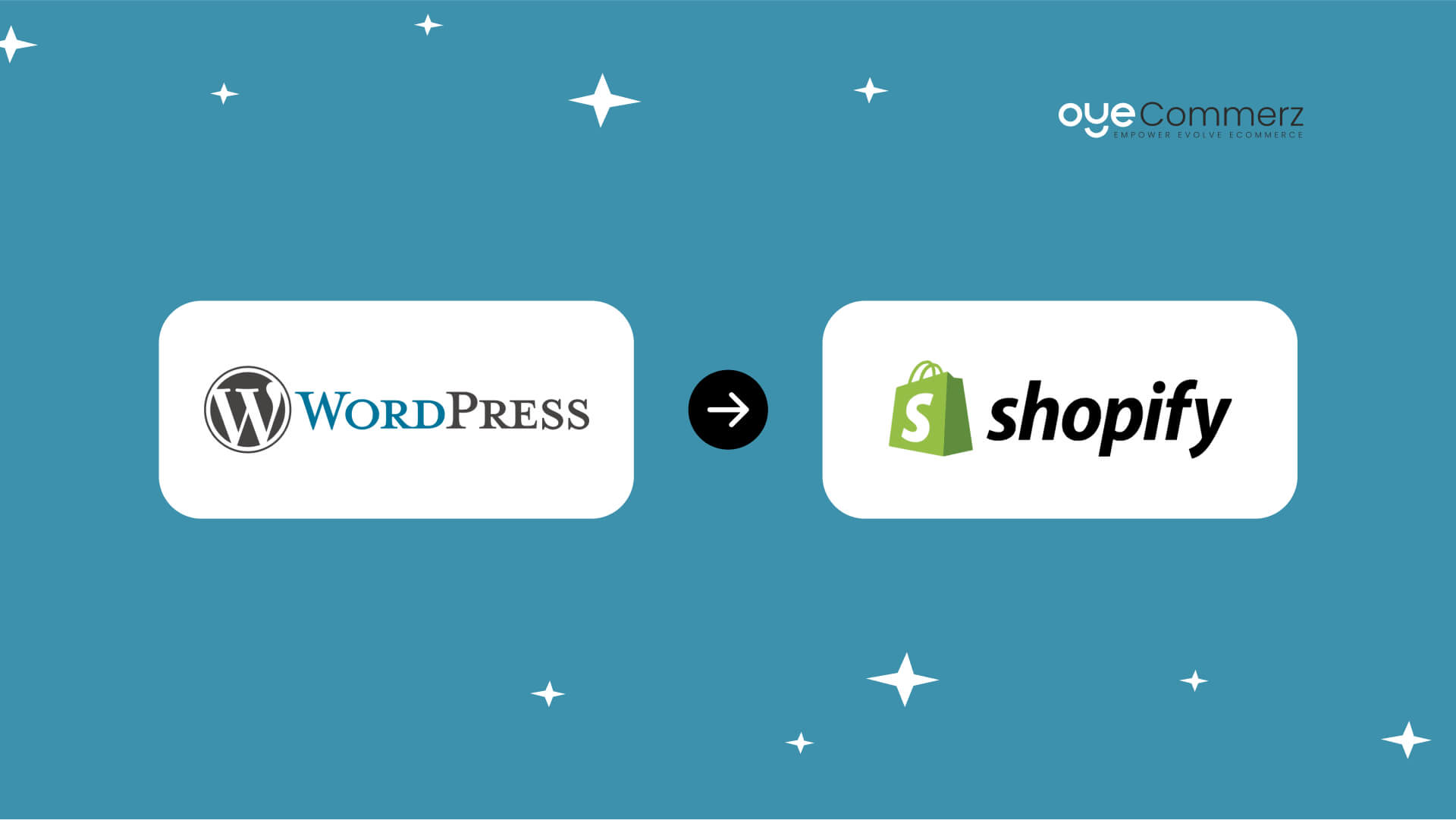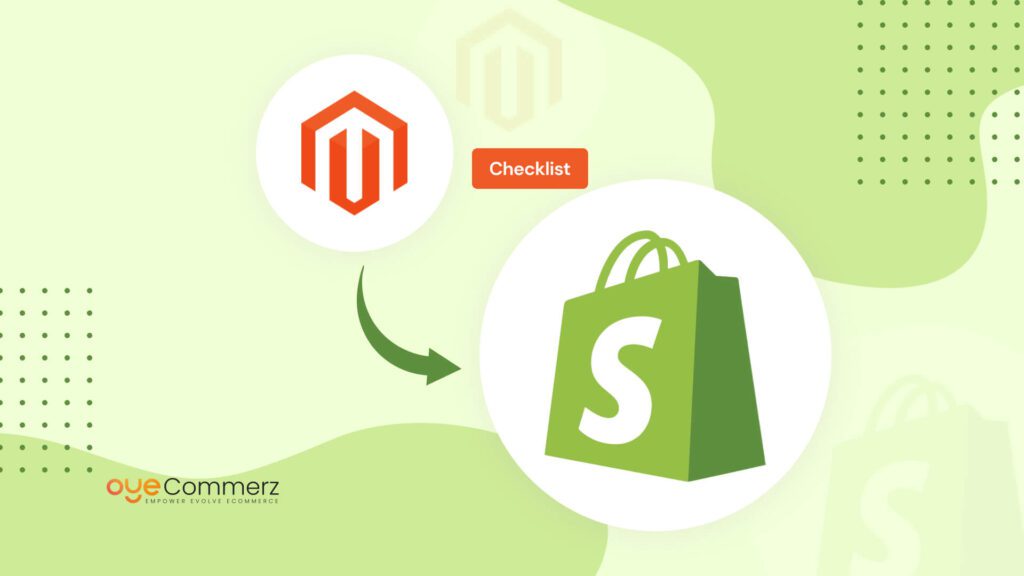As an business owner, you’re always looking for ways to make your online store run more smoothly and effectively. If you’ve been considering switching from WordPress to Shopify, you’re in the right place! Shopify is a powerful platform designed specifically for e-commerce, and businesses that migrate to Shopify often experience up to a 30% increase in site speed and improved sales performance.
In this guide, we’ll walk you through everything you need to know about migrating to Shopify. From seamless transitions to optimized features, we’ll help you make the switch with ease and ensure your business thrives on its new platform. Let’s get started!
Why Migrate from WordPress to Shopify?
Before delving into the migration process, it’s essential to understand the reasons why you might want to make this shift. Both WordPress and Shopify have their strengths, but each caters to a slightly different set of needs.
- E-commerce Focus: Shopify is designed specifically for e-commerce, offering features and tools tailored to the needs of online stores. WordPress, while versatile, may require additional plugins and customization to match Shopify’s e-commerce capabilities.
- Scalability: Shopify is renowned for its scalability, making it a suitable choice for businesses of all sizes. As your business grows, Shopify can handle increased traffic and product listings more effectively than WordPress.
- Security: Shopify provides robust security features, including SSL certificates, DDoS protection, and compliance with PCI DSS standards. While WordPress can be secure with the right plugins and configurations, Shopify simplifies this aspect for e-commerce merchants.
- User-Friendly: Shopify offers a user-friendly interface, making it easier for non-technical users to manage their online stores efficiently. WordPress, on the other hand, can be more complex, especially when dealing with e-commerce plugins.
- Support and Updates: Shopify provides 24/7 customer support and regular updates, ensuring your store remains functional and secure. WordPress relies on various third-party plugins, which may not always be consistently updated or supported.
Planning Your WordPress to Shopify Migration
- Set Clear Objectives
Before embarking on the migration process, define your goals and expectations. Consider factors such as design, functionality, and performance improvements. Understanding your objectives will help you make informed decisions throughout the migration.
- Backup Your Data
Ensure you have a complete backup of your WordPress website, including all files and databases. This backup will serve as a safety net in case anything goes wrong during the migration process.
- Choose a Shopify Plan
Select a Shopify plan that aligns with your business needs. Shopify offers a variety of plans, each with different features and pricing. Take the time to research and pick the one that suits you best.
- Purchase a Domain
If you haven’t already, purchase a domain name for your Shopify store. You can either register a new domain through Shopify or transfer your existing domain.
- Design and Theme Selection
Select a Shopify theme that matches your branding and design preferences. You can choose from free and premium themes available in the Shopify Theme Store. Customize the theme to align with your vision.
- Product Migration
Migrating your products from WordPress to Shopify is a critical step. You can do this manually by entering product details one by one, but for larger stores, consider using a CSV file import or third-party migration tools. Ensure all product data, including images, descriptions, prices, and variants, are accurately transferred.
- Content Migration
If you have blog content on your WordPress site, you’ll need to migrate it to Shopify. Shopify has a built-in blogging platform, but you may need to reformat and optimize your content to fit the new platform. Ensure all images and links are correctly updated.
- Set Up Payment Gateways
Configure your preferred payment gateways on Shopify to ensure smooth transaction processing. Shopify supports multiple payment options, including credit cards, PayPal, and more.
- SEO Considerations
Preserve your SEO rankings by setting up 301 redirects for all your old WordPress URLs to their corresponding pages on Shopify. This step is crucial to maintain your search engine visibility and traffic.
- Test Your Store
Before going live, thoroughly test your Shopify store. Verify that the checkout process works flawlessly.
Executing the Migration
Now that you’ve thoroughly planned your migration, it’s time to execute it.
- Domain Setup
Configure your domain settings in Shopify by pointing your domain to Shopify’s servers. This step may involve changing DNS records, which can take some time to propagate across the internet.
- Content Migration
Begin migrating your content, including products and blog posts, following the methods you’ve chosen during the planning stage. Ensure that all data is accurately transferred.
- Theme Customization
Customize your selected Shopify theme to match your brand and design preferences. Pay attention to mobile responsiveness and overall user experience.
- Install Essential Apps
Install essential apps for features like email marketing, SEO optimization, and analytics.
- Set Up Payment Gateways
Configure your payment gateways, ensuring they work seamlessly. Test the payment process with real transactions to confirm that everything functions as expected.
- Data Testing
Thoroughly test your data migration to identify and resolve any discrepancies. Check product listings, images, prices, and links to ensure they are accurate.
Post-Migration Considerations
After the migration is complete, there are a few additional steps to ensure ongoing success.
- Ongoing Maintenance
Regularly update your Shopify store with fresh content, product listings, and promotions. Keep an eye on app updates and install new ones as needed to enhance functionality.
- Analytics and SEO
Continuously monitor your store’s performance through analytics tools. Keep optimizing for SEO to maintain and improve your search engine rankings.
- Customer Support
Provide excellent customer support to address any inquiries or issues from your customers. Shopify’s support team can assist you, but having a dedicated support system in place is essential.
- Growth Strategies
Develop and implement strategies to grow your Shopify store, such as expanding product offerings, launching marketing campaigns, and exploring new sales channels.
WordPress to Shopify Migration with OyeCommerz
Streamline your online business transition with OyeCommerz’s WordPress to Shopify Migration Services. Our experts ensure a smooth, secure transfer of your digital storefront from WordPress to Shopify, optimizing for performance and growth. Experience a seamless migration journey with OyeCommerz and unlock the full potential of Shopify’s powerful e-commerce capabilities. Let us guide you every step of the way in elevating your online presence.
Conclusion
Migrating from WordPress to Shopify is a significant step for any e-commerce business. It requires careful planning, execution, and ongoing maintenance to ensure a successful transition. By following this complete guide, you’ll be well-equipped to navigate the process smoothly, taking advantage of Shopify’s e-commerce-focused features and scalability to propel your online business to new heights. Remember that thorough preparation and attention to detail are key to a successful migration.


